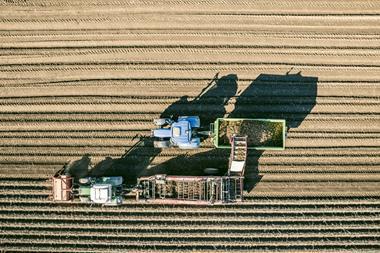DENMARK – Danish pensions provider AP Pensions saw investment returns of 10.5% in 2012 and a 27% surge in membership during the year – mostly due to its merger with financial services sector pension fund FSP.
The overall investment return of 10.5% includes a 9.8% return for the traditional with-profits pension product and an average return for unit-link pensions of 12.5%, the company said.
Managing director Søren Dal Thomsen said: “2012 was a really good year for AP Pension, and we are very pleased with the results we have achieved for the benefit of our customers.”
Business growth was particularly strong for the customer-owned pensions firm in 2012, largely because of the FSP merger.
The link-up alone brought 17,000 new customers to the AP Pension, and overall AP Pension membership rose by 25,000 or 27% during the year to stand at 118,000 at the end of December.
Total contributions grew by 14.5% in 2012, while regular contributions rose by 12.1%.
Total assets stood at DKK87bn at the end of the year, up from DKK55bn the year before.
Dal Thomsen said the company’s most important goal was to create value for its customers in the form of returns, low costs and better service.
“That is why it is important we continue to grow,” he said.
Many Danish pension funds have been encouraging members to switch to the less reserve-heavy unit-link products, away from traditional with-profits pensions, but AP Pension’s managing director said there was still strong demand for the older-style pensions.
“We can confirm customers demand the security that comes with pension savings, which give a stable return year after year,” he said.
The bonus rate – or reserves – stood at 12.8% at the end of 2012 for customers in the new scheme, and 9.7% overall.
“The bonus rate is a reflection of our ability to withstand negative swings on the financial markets, and our ranking is at the absolute top of the market,” Dal Thomsen said.
Meanwhile, Danish pension fund Lønmodtagernes Dyrtidsfonds (LD) saw assets grow by DKK1bn (€134m) in 2012, as many members with the right to payments opted instead to keep their savings in the fund.
In 2012, assets under management rose by nearly DKK1bn, to DKK52.5bn from DKK51.5bn at the end of 2011, according to figures from LD.
Dorrit Vanglo, director at LD, said: “Our whole organisation is geared towards falls in the level of total assets, but members prefer to go the other way slightly.
“I am convinced many members are letting the money stay with LD – although they could withdraw the sum at any time – because they can see the money growing in the account.”
LD makes payments but does not receive any contributions and as such generally expects its total assets to fall year by year.
The fund was established at the end of the 1970s to manage workers’ frozen cost-of-living allowances.
These were originally meant to be paid to employees to offset inflation, but the government later decided to pay them as a supplementary lump sum on retirement.
In 2012, some 266,000 employees opted to leave their savings in LD, even though they were entitled to have the money paid out to them.
LD said 40,000 accounts were paid out during the year, containing more than DKK3bn.
Investment returns of 10.0% for the biggest membership group – those individuals in the LD Discretionary Investments product – contributed to the high total asset level, it said.
The return on LD Discretionary Investments was 9.7% after investment costs.
With an average membership age of 57, 34% of members over 60, savings paid out to around 40,000 members every year and no new contributions, LD said it always had to create liquidity to meet its payments while generating good returns.
It was therefore obliged to invest with a short-term horizon, it said.
“LD operates under very different conditions than pension funds with ongoing contributions and a long-term payment outflow, and so it cannot invest in infrastructure, wind farms or anything else where the money is tied up for many years,” it said.












No comments yet